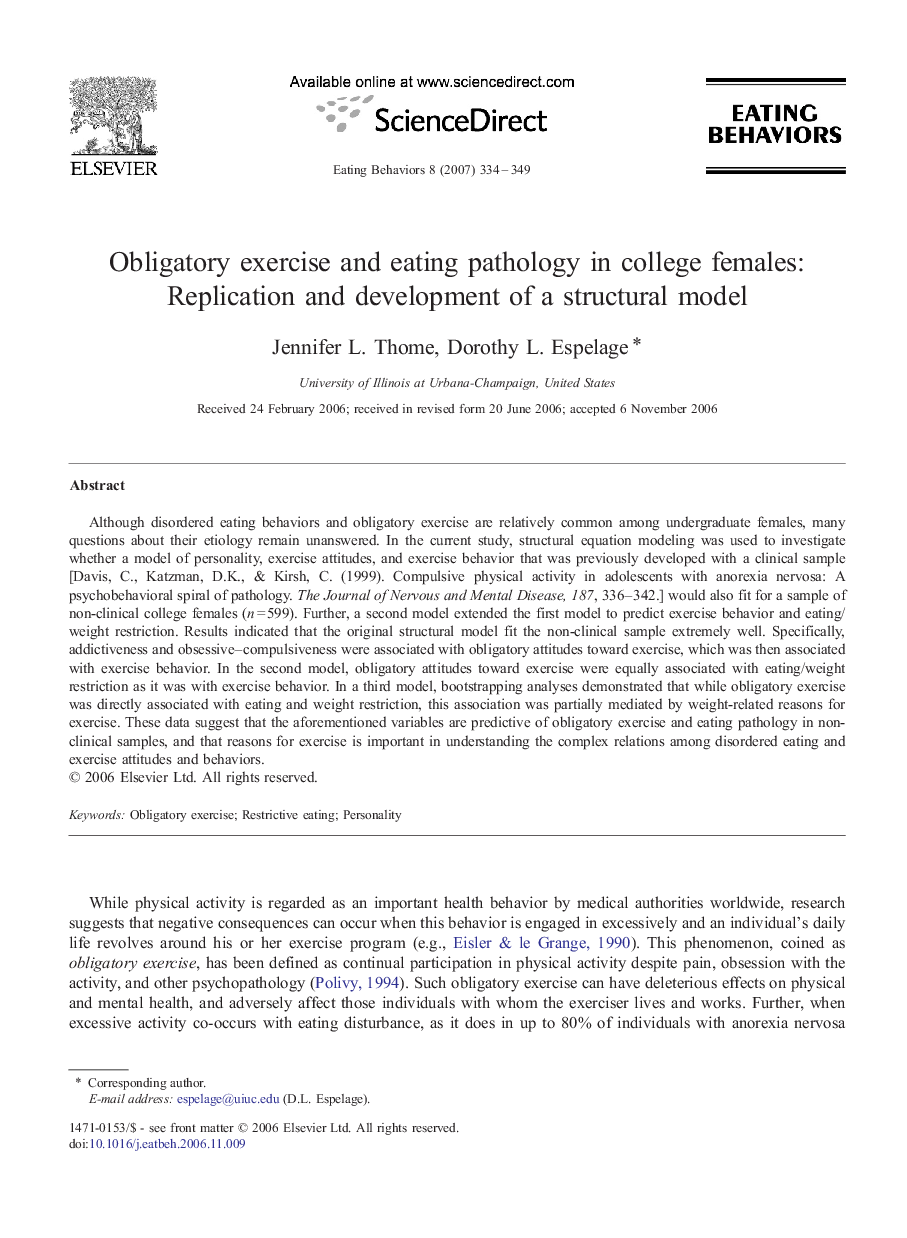| Article ID | Journal | Published Year | Pages | File Type |
|---|---|---|---|---|
| 906897 | Eating Behaviors | 2007 | 16 Pages |
Although disordered eating behaviors and obligatory exercise are relatively common among undergraduate females, many questions about their etiology remain unanswered. In the current study, structural equation modeling was used to investigate whether a model of personality, exercise attitudes, and exercise behavior that was previously developed with a clinical sample [Davis, C., Katzman, D.K., & Kirsh, C. (1999). Compulsive physical activity in adolescents with anorexia nervosa: A psychobehavioral spiral of pathology. The Journal of Nervous and Mental Disease, 187, 336–342.] would also fit for a sample of non-clinical college females (n = 599). Further, a second model extended the first model to predict exercise behavior and eating/weight restriction. Results indicated that the original structural model fit the non-clinical sample extremely well. Specifically, addictiveness and obsessive–compulsiveness were associated with obligatory attitudes toward exercise, which was then associated with exercise behavior. In the second model, obligatory attitudes toward exercise were equally associated with eating/weight restriction as it was with exercise behavior. In a third model, bootstrapping analyses demonstrated that while obligatory exercise was directly associated with eating and weight restriction, this association was partially mediated by weight-related reasons for exercise. These data suggest that the aforementioned variables are predictive of obligatory exercise and eating pathology in non-clinical samples, and that reasons for exercise is important in understanding the complex relations among disordered eating and exercise attitudes and behaviors.
